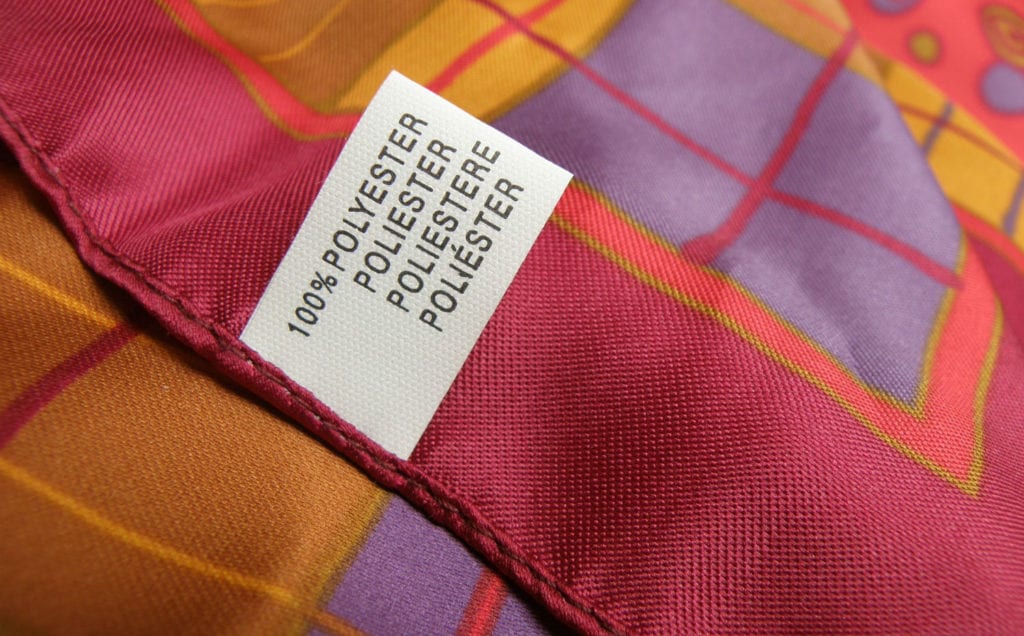
What is Polyester?
The PET fiber for mattresses and pillows
Polyester is a polymer of esters. There are many kinds of polyesters, some of them naturally occurring, such as in some seed coatings. A polyester can be thermosetting (hardening with heat) or thermoplastic (softening or melting with heat).
The class of polyesters used in textile and cushioning fibers is polyethylene terephthalate (PET). It is also used to make beverage bottles. The Federal Trade Commission classification of a textile fiber as polyester requires an ester content of at least 85 percent.
Recyclable
PET is easily recycled. Though not often labeled as such, “virgin polyester” means the material does not contain recycled PET. We are more likely to find a label on clothing, upholstery, or bedding boasting that the fiber is “Made from recycled polyester,” since that is considered green – environmentally friendly. A “virgin” label is more likely to be applied to products which must be sterile to assure the users of no contamination through prior use.
Properties of Polyester
Polyester does not absorb water. Polyester textiles can be made absorbent by creating a “fuzzy” texture on the strands. When the strands are spun into thread and yarn, the pockets created by the texture may hold water for a time.
Absorbency is usually achieved by spinning the polyester strands with an absorbent natural fiber, such as cotton, to create the blend poly cotton. The fabric blends are intended to have “the best of both,” but have their own drawbacks. For example, poly cotton is less breathable than 100% cotton, but has better wear and tear resistance than 100% cotton and is more absorbent than 100% polyester. These blends come in different polyester/cotton ratios, such as 65/35, 50/50, and 45/55.
Polyester is also blended with other natural, manufactured, and synthetic fibers. For instance, in some applications it is blended with rayon, a manufactured fiber made from cellulose extracted from wood fiber. Several popular pillows (such as the Snuggle-Pedic Ultra Luxury Pillow, have covers of bamboo-derived rayon and polyester, and it is found in the covers of some memory foam mattresses, such as the Snuggle-Pedic Mattress.
Polyester in Bedding
The most common use for polyester fibers is in clothing, but it is also one of the materials used in bedding. This includes 100% polyester and polyester blends in blankets, comforters, sheets & pillowcases, and mattress and pillow covers (as mentioned above). It also includes polyester fiber filling for pillows and for mattress quilting. Besides cotton and rayon, polyester in mattress covers may be blended with wool, cashmere, silk, and other natural and synthetic fibers.
Plant-Based Polyester?
PET, the kind of polyester used in textile fibers, is made of substances refined from petroleum and coal. Since esters themselves are produced by plants, there has been research into producing polyester totally from plant-derived substances. This would reduce dependence on fossil sources for raw materials, making polyester a sustainable product.
PLA (polylactic acid), a product like PET in several ways, is touted as a replacement for polyester. It is created from fermenting plant starches to yield lactic acid, then polylactides, which are polymerized into PLA plastic. PLA can be molded and spun like polyester. It is used instead of polyester, nylon, and vinyl by Naturepedic, which eschews the use of petroleum derivatives.
PLA is not polyester. It is not as strong as polyester, and has a lower melting point. This means that a pillow or mattress cover with PLA will not be as durable as if it used polyester. A serious drawback is that PLA and PET cannot be recycled together. They have to be handled separately, but PLA and PET bottles are so much alike they tend to be lumped together. This is not as serious an issue for textiles, especially blends, since they are rarely recycled.
One company, Toray Global, claims that its Ecodear® PET is plant-based. The esters are plant-derived, but their description says the terephthalic acid comes from petroleum. This sounds a lot like the claims for plant-based memory foam. However, the plant content of the Ecodear® PET would be at least 85% if all the esters were from plants, while no more than 5-10% of the polyols can be plant-originated for memory foam to be really effective.
Outlook
The utility of polyester in textiles and cushioning fibers assures it a place in mattress and pillow materials for the foreseeable future.

